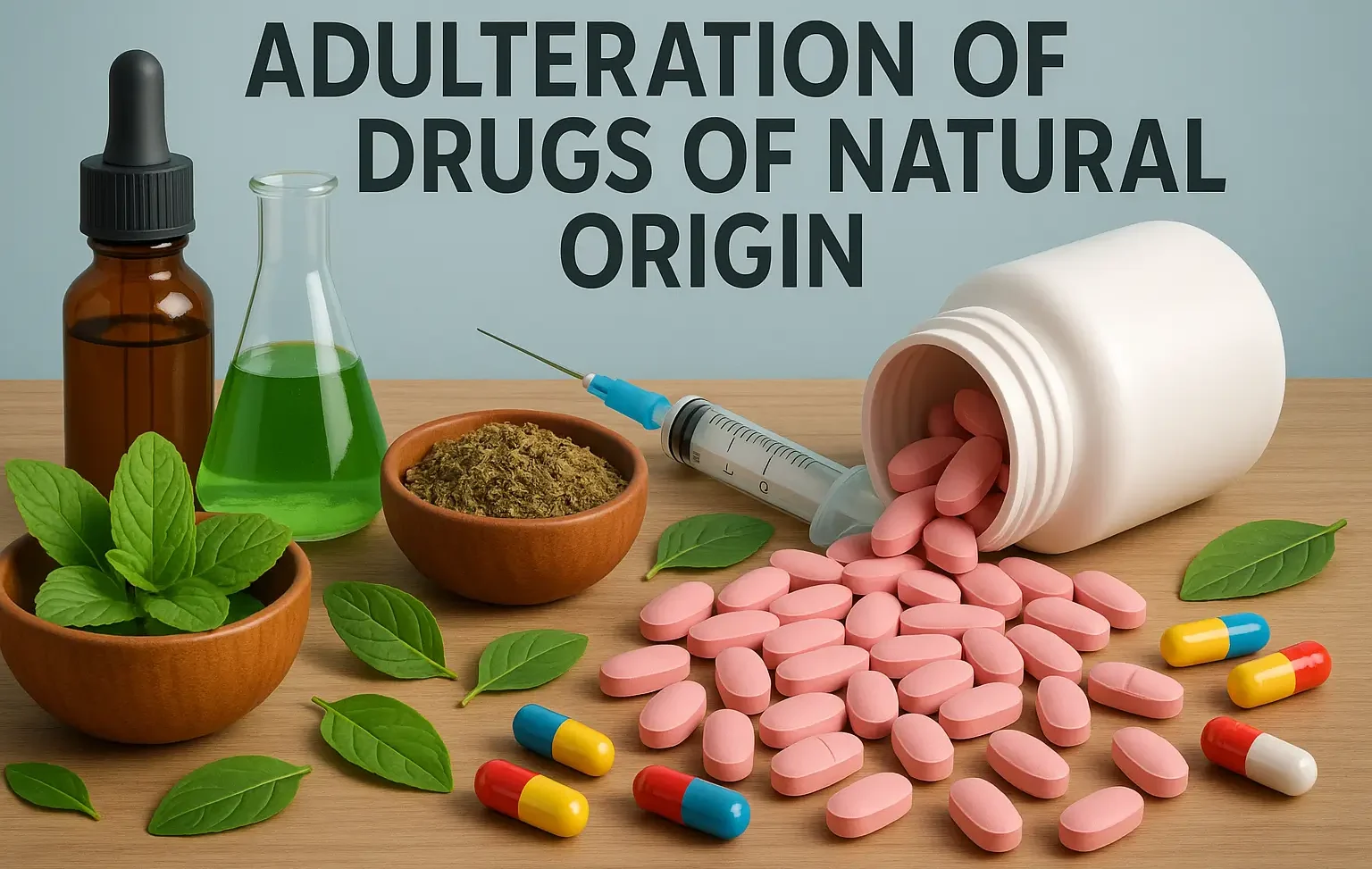- Adulteration of Drugs of Natural Origin is Fraudulent or by mistake substitution or contamination reducing purity, safety, and potency.
- Adulteration refers to the intentional or unintentional addition, substitution, or removal of substances in a drug, compromising its quality and safety.
Types of Adulteration:
- Adulteration refers to the contamination or addition of inferior substances to food, beverages, or other products, making them unsafe for consumption.
- It can be broadly classified into two types:

-
Direct Adulteration
- Direct adulteration occurs when harmful substances are deliberately added to food products to increase quantity, enhance appearance, or reduce costs.
- These substances are often toxic and pose serious health risks.
- Examples of Direct Adulteration:
- Addition of non-edible colors – e.g., Metanil yellow in turmeric
- Mixing toxic chemicals – e.g., Formalin in milk and fish
- Use of non-food-grade additives – e.g., Washing powder in ice cream
- Blending with inferior substances – e.g., Starch in milk or ghee
-
Indirect Adulteration
- Indirect adulteration occurs unintentionally due to environmental contamination, improper handling, or poor storage conditions.
- It usually happens during production, processing, transportation, or packaging.
- Examples of Indirect Adulteration:
- Pesticide residues in fruits and vegetables – e.g., DDT, lead, mercury
- Heavy metal contamination in water – e.g., Arsenic, cadmium
- Oil rancidity due to improper storage – leading to toxic effects
- Rodent or insect contamination – e.g., Presence of insect parts in grains
Advertisements
Causes of Adulteration
- Economic Gain: Lower production costs by using cheaper materials.
- Lack of Regulation: Inadequate enforcement of quality standards.
- Misidentification: Errors in plant or species identification leading to the use of incorrect materials.
- Environmental Factors: Contamination from soil, water, or air pollutants.
Examples of Adulteration
-
Plant-Based Drugs:
- Turmeric (Curcuma longa): Adulterated with metanil yellow (a synthetic dye) to enhance color.
- Ginger (Zingiber officinale): Adulterated with wheat flour or other fillers to increase weight.
-
Animal-Based Drugs:
Detection and Prevention of Adulteration
- Strict Regulatory Frameworks: Implementing and enforcing standards like the United States Pharmacopeia (USP) or the European Pharmacopoeia.
- Supplier Verification: Ensuring that raw materials are sourced from reputable suppliers.
- Good Manufacturing Practices (GMP): Adhering to GMP to minimize contamination and ensure consistency.
- Advanced Analytical Techniques: Utilizing sophisticated methods for detection (discussed in evaluation methods below).

